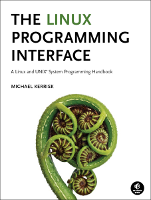/* scm_multi_send.c
Used in conjunction with scm_multi_recv.c to demonstrate passing of
ancillary data containing multiple 'msghdr' structures on a UNIX domain
socket.
This program sends ancillary data consisting of two blocks. One block
contains process credentials (SCM_CREDENTIALS) and the other contains one
or more file descriptors (SCM_RIGHTS).
Usage is as shown below in usageError().
This program uses stream sockets by default; the "-d" command-line option
specifies that datagram sockets should be used instead.
This program is Linux-specific.
*/
#define _GNU_SOURCE
#include "scm_multi.h"
static void
usageError(char *pname)
{
fprintf(stderr, "Usage: %s [options] file...\n", pname);
fprintf(stderr, " Options:\n");
fprintf(stderr, "\t-d Use datagram (instead of stream) socket\n");
fprintf(stderr, "\t-n Don't send any real data with the "
"ancillary data\n");
fprintf(stderr, "\t-p <pid> Use this PID when sending credentials\n");
fprintf(stderr, "\t-u <uid> Use this UID when sending credentials\n");
fprintf(stderr, "\t-g <gid> Use this GID when sending credentials\n");
fprintf(stderr, " If any of any of -p/-u/-g is absent, the "
"corresponding real\n credential is used.\n");
exit(EXIT_FAILURE);
}
int
main(int argc, char *argv[])
{
/* By default, this program sends an SCM_CREDENTIALS message containing
the process's real credentials. This can be altered via command-line
options. */
pid_t pid = getpid();
uid_t uid = getuid();
gid_t gid = getgid();
/* Parse command-line options. */
bool useDatagramSocket = false;
bool sendData = true;
int opt;
while ((opt = getopt(argc, argv, "dnp:u:g:")) != -1) {
switch (opt) {
case 'd':
useDatagramSocket = true;
break;
case 'n':
sendData = false;
break;
case 'p':
pid = atoi(optarg);
break;
case 'u':
uid = atoi(optarg);
break;
case 'g':
gid = atoi(optarg);
break;
default:
usageError(argv[0]);
}
}
int fdCnt = argc - optind; /* Number of FDs in ancillary data */
if (fdCnt <= 0)
usageError(argv[0]);
/* Allocate a buffer of suitable size to hold the ancillary data. This
buffer is in reality treated as a 'struct cmsghdr', and so needs to be
suitably aligned: malloc() provides a block with suitable alignment. */
size_t fdAllocSize = sizeof(int) * fdCnt;
size_t controlMsgSize = CMSG_SPACE(fdAllocSize) +
CMSG_SPACE(sizeof(struct ucred));
char *controlMsg = malloc(controlMsgSize);
if (controlMsg == NULL)
errExit("malloc");
/* The control message buffer must be zero-initialized in order for the
CMSG_NXTHDR() macro to work correctly. */
memset(controlMsg, 0, controlMsgSize);
/* The 'msg_name' field can be used to specify the address of the
destination socket when sending a datagram. However, we do not need to
use this field because we use connect() below, which sets a default
outgoing address for datagrams. */
struct msghdr msgh;
msgh.msg_name = NULL;
msgh.msg_namelen = 0;
/* We must transmit at least 1 byte of real data in order to send ancillary
data, at least when using stream sockets. The following allows for
testing the results if no real data is sent with the ancillary data. */
struct iovec iov;
int data = 12345;
if (sendData) {
iov.iov_base = &data;
iov.iov_len = sizeof(data);
msgh.msg_iov = &iov;
msgh.msg_iovlen = 1;
} else {
msgh.msg_iov = NULL;
msgh.msg_iovlen = 0;
}
/* Place a pointer to the ancillary data, and size of that data, in the
'msghdr' structure that will be passed to sendmsg(). */
msgh.msg_control = controlMsg;
msgh.msg_controllen = controlMsgSize;
/* Set message header to describe the ancillary data that we want to
send. */
/* First, the file descriptor list. */
struct cmsghdr *cmsgp = CMSG_FIRSTHDR(&msgh);
cmsgp->cmsg_level = SOL_SOCKET;
cmsgp->cmsg_type = SCM_RIGHTS;
/* The ancillary message must include space for the required number of file
descriptors. */
cmsgp->cmsg_len = CMSG_LEN(fdAllocSize);
printf("cmsg_len 1: %ld\n", (long) cmsgp->cmsg_len);
/* Open files named on the command line, and copy the resulting block of
file descriptors into the data field of the ancillary message. */
int *fdList = malloc(fdAllocSize);
if (fdList == NULL)
errExit("calloc");
/* Open the files named on the command line, placing the returned file
descriptors into the ancillary data. */
for (int j = 0; j < fdCnt; j++) {
fdList[j] = open(argv[optind + j], O_RDONLY);
if (fdList[j] == -1)
errExit("open");
}
memcpy(CMSG_DATA(cmsgp), fdList, fdAllocSize);
/* Next, the credentials. */
cmsgp = CMSG_NXTHDR(&msgh, cmsgp);
cmsgp->cmsg_level = SOL_SOCKET;
cmsgp->cmsg_type = SCM_CREDENTIALS;
/* The ancillary message must include space for a 'struct ucred'. */
cmsgp->cmsg_len = CMSG_LEN(sizeof(struct ucred));
printf("cmsg_len 2: %ld\n", (long) cmsgp->cmsg_len);
/* Initialize the credentials that are to be placed in the ancillary
data. */
struct ucred creds;
creds.pid = pid;
creds.uid = uid;
creds.gid = gid;
/* Copy credentials to the data area of this ancillary message block. */
memcpy(CMSG_DATA(cmsgp), &creds, sizeof(struct ucred));
/* Connect to the peer socket. */
int sfd = unixConnect(SOCK_PATH,
useDatagramSocket ? SOCK_DGRAM : SOCK_STREAM);
if (sfd == -1)
errExit("unixConnect");
/* Send the data plus ancillary data. */
ssize_t ns = sendmsg(sfd, &msgh, 0);
if (ns == -1)
errExit("sendmsg");
printf("sendmsg() returned %zd\n", ns);
exit(EXIT_SUCCESS);
}
